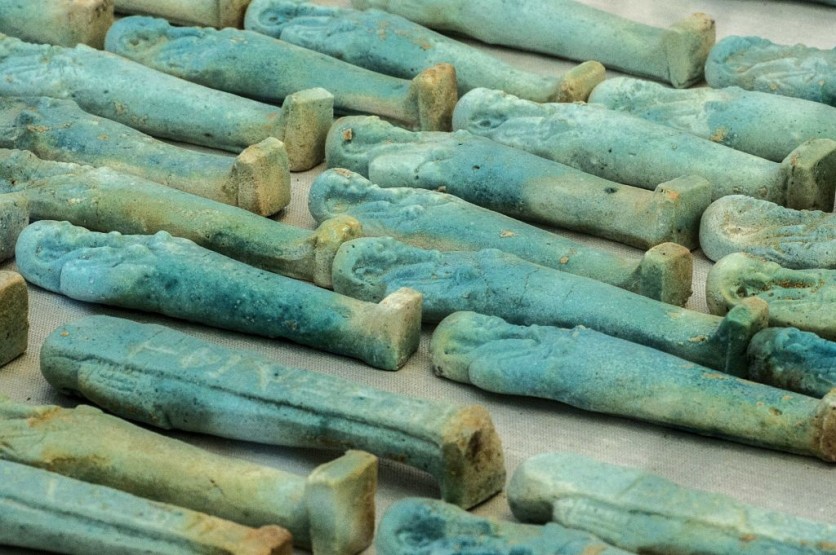Archaeologists from the Ministry of Tourism and Antiquities unearthed mummies with golden tongues while working on excavations in Egypt's Menoufia Governorate, reported first by Heritage Daily.
The remarkable find occurred during an expansion of research at the Quweisna necropolis, a graveyard with hundreds of tombs from different periods in Egypt's history.

Ancient God Osiris
Numerous mummies were discovered during the excavations, some of which had a golden tongue or amulet inserted into the mouth of the corpse. This custom was designed to ensure that the deceased could speak in front of the court of the ancient Egyptian god Osiris.
Osiris, one of the main Egyptian deities, Osiris, initially appeared in funerary texts at the height of the Pyramid Age (2400 B.C.), when mummification was gaining notoriety.
He presided over the court that determined what would happen to dead kings, according to the Canadian Museum of History.
The mummies are in poor condition of preservation, according to Mustafa Waziri, secretary-general of the Supreme Council of Antiquities, but the researchers discovered that some of them were wrapped with thin sheets of gold and stored in wooden coffins.
Clay pots, golden artifacts in the forms of scarabs and flowers, and several funerary vessels and stone amulets were also discovered by the team of archaeologists.
"The newly discovered part of the necropolis has a different architectural style. Early studies on the burials, the mummies, and the funerary collection, indicate that this necropolis was used during three different periods: the late ancient Egyptian, the Ptolemaic, and part of the Roman period," Ayman Ashmawi, chief of the Egyptian Antiquities Sector, said in a statement.
Hundreds of graves, stone coffins, and a massive coffin made of black granite for an influential priest have all been uncovered during previous excavations at Quweisna, as per Heritage Daily.
2,500-years-old Mummies
Archaeologists had a similar find last year in December. They discovered two tombs holding the mummified remnants of a man and woman who are believed to have died some 2,500 years ago in the ancient Egyptian city of Oxyrhynchus, which is now El Bahnasa.
The researchers discovered three tongues made of gold foil while conducting the excavation. More interestingly, one of the tombs had never been opened, according to a report by Daily Express.
Four canopic jars used in the mummification process, a scarab amulet, and more than 400 pieces of faience-small funerary sculptures made of glazed earthenware were among the objects found inside the sealed tomb.
A golden tongue was still in the mummy's mouth, and his face was likewise well-preserved.
Related Article : Archaeologists Discover Signs of Ancient Human Civilization in the Depths of Lake Constance
This article is owned by Tech Times
Written by Jace Dela Cruz
ⓒ 2025 TECHTIMES.com All rights reserved. Do not reproduce without permission.




